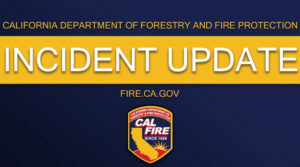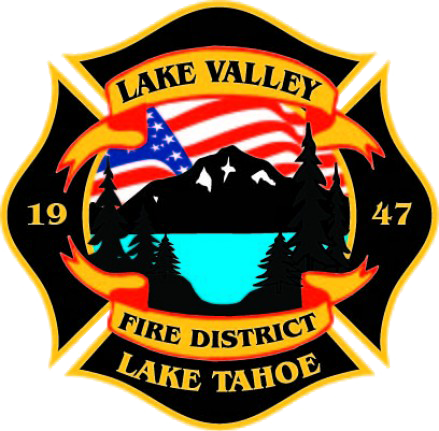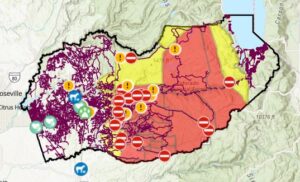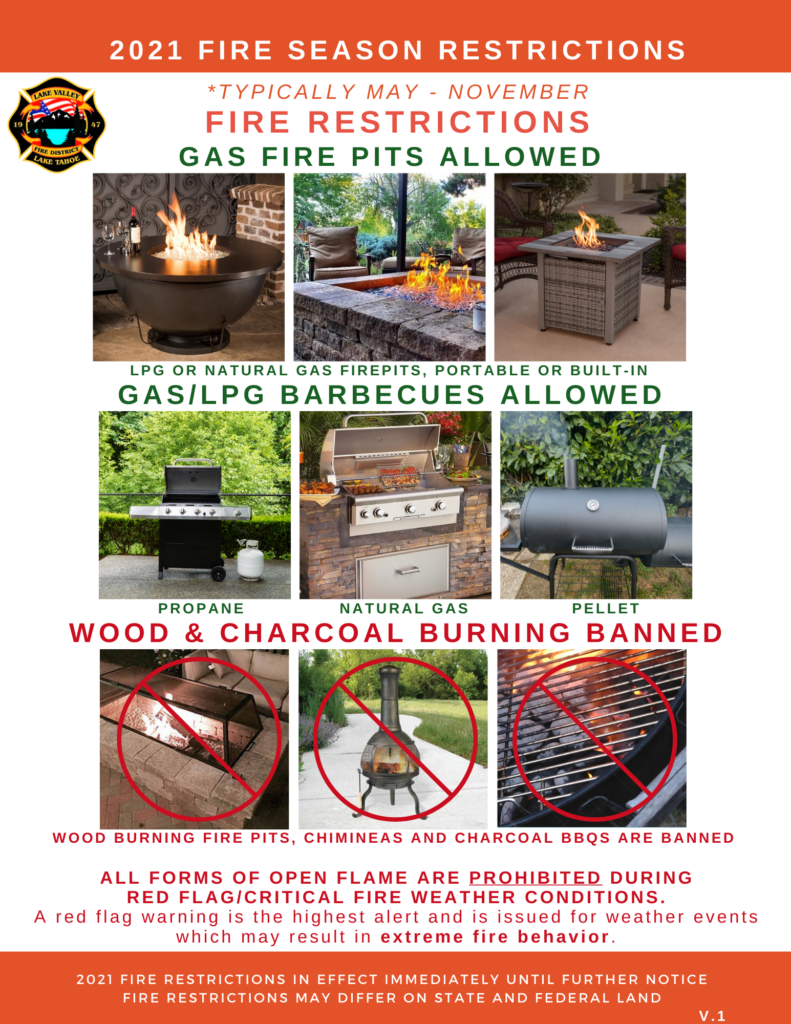by Martin Goldberg | Aug 22, 2021 | News
Caldor Fire Information
 The Lake Valley Fire Protection District appreciates your efforts to stay informed on this rapidly changing wildfire. The District is working closely with the Caldor Fire Incident Management Team including CALFIRE and the U.S. Forest Service and will continue to do so throughout the incident. All our actions are based on the most current fire information. The District wants our community to be informed and provide the following incident information. The incidents information line is (530) 303-2455 and the media line is (530) 497-0315.
The Lake Valley Fire Protection District appreciates your efforts to stay informed on this rapidly changing wildfire. The District is working closely with the Caldor Fire Incident Management Team including CALFIRE and the U.S. Forest Service and will continue to do so throughout the incident. All our actions are based on the most current fire information. The District wants our community to be informed and provide the following incident information. The incidents information line is (530) 303-2455 and the media line is (530) 497-0315.
Fire Information
The Caldor Fire Public Information Team provides information twice daily, at 7 am and at 7 pm. Other notices regarding evacuations, smoke impacts and community meetings are released throughout the day. These can be obtained directly by email or by social media. For emails, click here. To Like the CALFIRE Amador-El Dorado Unit Facebook page and get incident updates, click here. To Like the U.S. Forest Service – Eldorado National Forest Facebook page and get incident updates, click here.
Statewide fire Information can be found on CALFIRE’s main website at www.fire.ca.gov. For Caldor Fire information on CALFIRE’s website click here https://www.fire.ca.gov/incidents/2021/8/14/caldor-fire/. Another great resource for fire information, go to InciWeb at https://inciweb.nwcg.gov/. Calfor fire information can be found on the InciWeb site at https://inciweb.nwcg.gov/incident/7801/.
Evacua tion Information
tion Information
Please note, there is no evacuation order, nor warning, issued in the Lake Tahoe Basin area as of Sunday, August 22. However, this is a good time to assemble an emergency supply kit should the need arise to evacuate. You can find information at Emergency Supply Kit – Ready for Wildfire. Additionally, information on how to prepare family members in the event of an evacuation can be found at Prepare Your Family – Ready for Wildfire. Click the map for current El Dorado County Evacuation information.
by Martin Goldberg | Jun 21, 2021 | News
Enhanced fire restrictions began June 15, 2021, and will remain in effect through November or until rescinded. Wood and charcoal fires and other fire-related activities are prohibited in the Lake Valley Fire Protection District. Increased fire danger due to severe drought conditions and warm weather is a big concern this summer. Enhanced fire restrictions will help reduce the possibility of human-caused fires.

by Martin Goldberg | Jun 15, 2021 | News
Forest Service News Release
Public Affairs Specialist: Lisa Herron
(530) 721-3898
lisa.herron@usda.gov
www.fs.usda.gov/ltbmu
www.facebook.com/LakeTahoeUSFS/
twitter.com/LakeTahoeUSFS
Enhanced fire restrictions begin June 15 at Lake Tahoe
SOUTH LAKE TAHOE, Calif., June 15, 2021 – Enhanced fire restrictions begin today, June 15, 2021, and will remain in effect through November or until rescinded. Wood and charcoal fires and other fire-related activities are prohibited on National Forest System lands in the Lake Tahoe Basin, including developed campgrounds. Illegal campfires cause over 90 percent of the wildfires at Lake Tahoe and increased fire danger due to severe drought conditions and warm weather is a big concern this summer. Enhanced fire restrictions will help reduce the possibility of human-caused fires.
Pursuant to 16 USC 551 and 36 CFR 261.50(a), and to provide for public safety and protect natural resources, the following acts are currently prohibited within the Lake Tahoe Basin Management Unit:
- Building, maintaining, attending, or using a fire, campfire, or stove fire, including charcoal briquettes and wood, on National Forest System lands. 36 CFR 261.52(a).
- Smoking, except within an enclosed vehicle, or while stopped in an area at least three feet in diameter that is barren or cleared of all flammable material. 36 CFR 261.52(d).
- Operating an internal combustion engine off paved, gravel, or dirt National Forest System roads and trails, except within the Sand Pit Off-Highway Vehicle Area and boats on a water surface. 36 CFR 261.52(h).
- Welding or operating an acetylene torch with open flames. 36 CFR 261.52(i).
In addition to the restrictions listed above, possessing, discharging, or using any kind of firework, including sparklers and firecrackers, and any other pyrotechnic device is always prohibited.
Pursuant to 36 CFR 216.50 (e), persons with a valid Wilderness Permit or a California Campfire Permit may use a portable campfire pit, lantern or stove that uses gas, kerosene, jellied petroleum, or pressurized liquid fuel, with a shut-off valve, in an area at least three feet from any flammable materials. California Campfire Permits are free and available online at https://www.readyforwildfire.org/permits/campfire-permit/.
At the following National Forest beaches, campgrounds and resorts, portable gas appliances with a shut-off valve are permitted without a California Campfire Permit: Baldwin, Meeks Bay, Nevada, Pope, and William Kent beaches; Fallen Leaf, Meeks Bay, Nevada and William Kent campgrounds; and Camp Richardson, Meeks Bay and Zephyr Cove resorts.
A violation of these prohibitions is punishable by a fine of not more than $5,000 for an individual or $10,000 for an organization, or imprisonment for not more than six months, or both, 16 USC 551 and 18 USC 3559, 3571, and 3581.
The enhanced fire restriction Forest Order is posted at https://go.usa.gov/xVfjp. For more information on fire restrictions, visit https://go.usa.gov/xVDZw.
Information about private and state land fire restrictions, regulated by the California Department of Forestry and Fire Protection (CALFIRE), is available at https://burnpermit.fire.ca.gov/current-burn-status/ or from local fire districts.
###
by Martin Goldberg | Jun 6, 2021 | News
Staff Report by Tahoe Daily Tribune
SOUTH LAKE TAHOE, Calif. — The Lake Tahoe Basin is facing critical fire weather over the next couple of days.
The National Weather Service in Reno upgraded from a fire weather watch and issued a pair of red flag warnings for Sunday and Monday due to gusty winds and low humidity. The warnings are in effect each day from noon to 11 p.m.
West to southwest winds are expected to gust up to 45 mph in wind prone areas with a sustained wind of 15 to 25 mph. The humidity is 7 to 12% in western Nevada and 10 to 20% in the Tahoe Basin.
Officials say this time is critical, when fires can rapidly grow out of control.
“These are the conditions where a spark can become a catastrophic wildfire, with dry fuels, low humidity, and high winds in the forecast,” said Erin Holland, public information officer for North Tahoe Fire Protection District. “All of the wildfires creating devastation across California and northern Nevada in recent years occurred during red flag weather conditions, consequently all sources of outdoor open flame, including propane are banned during the red flag warning.”
Officials advise avoiding activities that could cause a spark such as yard work, target shooting, or campfires.
Sunday’s high temperature is expected to reach in the low 70s with Monday’s high in the high 60s.
If a fire does break out, officials advise residents and visitors to be prepared.
“Now is the time to ensure your vehicle has a full tank of fuel and is parked facing out, your devices are charged, your emergency go kit is current and within reach, and that your family and pets are prepared, practiced and ready to evacuate,” Holland said. “Visit our website for information on emergency and evacuation preparedness.”
For more information on how to make your home more resilient to wildfire, visit http://www.tahoelivingwithfire.com
by Martin Goldberg | May 3, 2021 | News
|
By residing in the Wildland Urban Interface (the zone where natural environments intersect human development), we take on the extra responsibility of living with wildfire.
However, living with wildfire at Lake Tahoe isn’t just an individual journey—it’s a team effort between ourselves, our neighbors, and federal, state, and local agencies. It is a partnership, and we all play a role.
|
|
|
2019 defensible space community workday in the Golden Bear neighborhood, South Lake Tahoe.
|
|
|
Become a Tahoe Network Neighborhood Leader
Tahoe Network neighborhood leaders receive training and access to educational resources and event assistance. With support from the Tahoe Network and your local fire district, you can inspire and empower your community to get prepared.
- If you’re interested in becoming a neighborhood leader, contact the Tahoe Network Fire Adapted Communities at fire@tahoercd.org or 530-543-1501 ext.114.
Educate Your Neighborhood
Organize Your Neighborhood
- Compile neighborhood email addresses and contact information. Send out wildfire preparedness information, emergency updates, or newsletters.
- Create a neighborhood communication thread, group, or forum on Facebook or Nextdoor focused on wildfire preparedness.
- Discuss your neighbors’ evacuation plan. Identify if any neighbors will need extra assistance.
Engage Your Neighborhood
- Plan a wildfire preparedness block party and invite your local fire district.
- Plan a defensible space community workday.
- Organize a tour of homes with exceptional defensible space and home hardening.
Apply for Firewise USA Recognition
Firewise USA is a national program that recognizes communities who are actively preparing for wildfire. You can join the eight other Firewise USA communities at Lake Tahoe and apply for your neighborhood to be recognized.
- Form a committee that’s comprised of residents and other applicable wildfire stakeholders.
- Obtain a written wildfire community risk assessment form your local fire district.
- Develop an action plan with a prioritized list of risk reduction projects/investments for our neighborhood.
- Host a defensible space community work day and an outreach event to educate neighbors on fire preparedness.
|
|
|
|
|
|
|
 The Lake Valley Fire Protection District appreciates your efforts to stay informed on this rapidly changing wildfire. The District is working closely with the Caldor Fire Incident Management Team including CALFIRE and the U.S. Forest Service and will continue to do so throughout the incident. All our actions are based on the most current fire information. The District wants our community to be informed and provide the following incident information. The incidents information line is (530) 303-2455 and the media line is (530) 497-0315.
The Lake Valley Fire Protection District appreciates your efforts to stay informed on this rapidly changing wildfire. The District is working closely with the Caldor Fire Incident Management Team including CALFIRE and the U.S. Forest Service and will continue to do so throughout the incident. All our actions are based on the most current fire information. The District wants our community to be informed and provide the following incident information. The incidents information line is (530) 303-2455 and the media line is (530) 497-0315.


